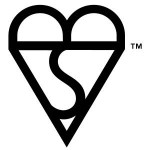All motorbike helmets sold in the UK must meet one of the following three standards:
 British Standard BS 6658:1985 and carry the BSI Kitemark
British Standard BS 6658:1985 and carry the BSI Kitemark- UNECE Regulation 22.05
- a European Economic Area member standard offering at least the same safety and protection as BS 6658:1985, and carry a mark equivalent to the BSI Kitemark
It’s illegal to sell a helmet in the UK that doesn’t conform to one of these – read more here. But just because all helmets meet a minimum standard doesn’t mean that all helmets are created equal. Some helmets far exceed the standard, offering superior protection levels over helmets that only just meet the standard. If every motorcyclist wore the safest helmet on the market, 50 lives would be saved each year in the UK alone; motorcyclists are only 1% of road traffic but represent 19% of fatalities. Seeing as it’s your head at risk, here’s how you can find out which helmets will best protect it in an accident.
SHARP is a government-run agency that crash tests helmets. It was formed in 2007 and, to-date, it has tested over 340 and it publishes a star rating, 5 stars being excellent protection and 1 star meaning it barely meets the standard.
SHARP cherry picks from various standards around the world to create a test which is tough on the helmet.
A helmet is designed to cushion an impact to the head, spreading the energy over as large an area as possible to minimise its effects. This is done by using an outer rigid shell with deformable material on the inside while the helmet is restrained on the head using a chin strap.
The testing process
SHARP runs 32 impact tests across seven examples in different helmet sizes, with each impact covering a different speed, angle or with other variables. The helmets are impacted against anvils of various kinds to simulate a road or kerb edge.
SHARP also looks at national and international crash studies to help select the test points most representative of real world crashes (see the Airframe Statistic helmet for an example of where crashes occur the most on helmets). The helmets tested must be available to the general public via retail channels.
The helmets are purchased at a store then inspected at the lab. They are marked up using a calibrated rig using lasers to ensure test points are consistently marked. The helmet is mounted on a headform of similar mass to a real head, that contains sophisticated measurement data to analyse the forces that go through the brain in an accident.
The first test is on the front, then the left side, then the right side, then the rear, then the crown. Three impact speeds are used: 6, 7.5 and 8.5m/s. 7.5m/s is the regulation 22.05 linear test speed (approx 16.8mph) on both flat and kerbed surfaces.
Oblique tests check the friction properties of the helmet.
Peak acceleration forces are measured and a minimum of 32 impacts are required for a helmet to get a SHARP rating.
To date, 50 helmets have a 5-star rating and they range in price from £60 to 799.
Helmet rating reports show the protection at different points of the head, plus the whether there are any serious defects. For example in this one-star test, the face guard was non-protective and only remained fully locked in 43% of impacts.
Alternative testing regimes
There is an alternative testing regime in Australia called CRASH. It is arguably more useful than SHARP because it also provides a rating for helmet fit and comfort, as well as safety. The two systems use similar methodologies for testing impact strength.
